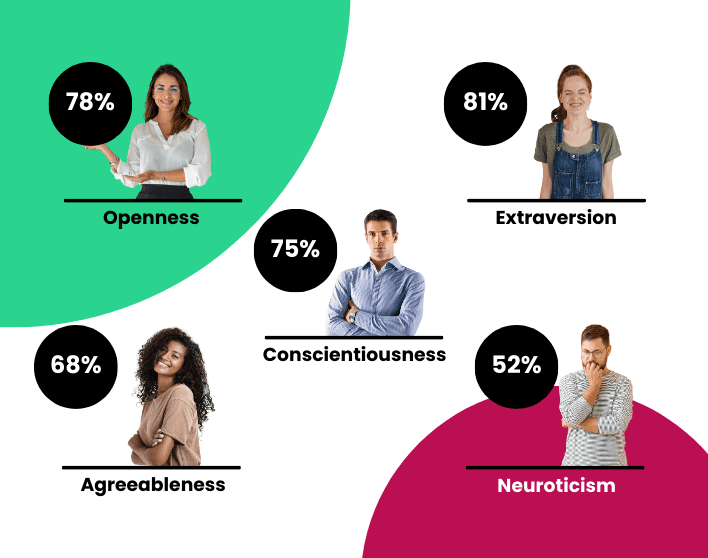Alexis Filippidis
Content Specialist
A recent decision by the U.S. Supreme Court has brought the topic of affirmative action to the forefront of national conversation. The court ruled that race can no longer be a factor in university admissions, effectively changing the course of affirmative action, also known as positive discrimination, in the United States.
Affirmative action policies were first introduced in the 1960s with the intention of counterbalancing the effects of past discrimination. By providing increased opportunities in education and employment to certain underrepresented groups, these policies aimed to enhance diversity, promote equal opportunities, and foster a more inclusive society.
The Supreme Court's recent decision has elicited a range of responses. Some perceive the ruling as a step towards a system where individuals are evaluated based on their skills and accomplishments rather than their race. However, others express concern that this decision could hinder efforts to promote diversity and inclusion.
While the ruling specifically pertains to universities, it also raises questions about the future of affirmative action in the workplace. If race can no longer be a consideration in university admissions, how might this affect employment practices? What implications could this decision have for diversity and inclusion initiatives in organizations nationwide? These are the questions currently being pondered by employers, HR professionals, and employees alike.
In the following sections, we will delve into the concept of affirmative action, its potential impact on the workplace, and how HR professionals can navigate this evolving landscape.
Definition & Types of Affirmative Action
Affirmative action, also known as positive discrimination, is a policy measure aimed at increasing diversity and counteracting the effects of past discrimination. This practice involves the proactive recruitment, hiring, and promotion of women, minorities, disabled individuals, and veterans. Affirmative action can be categorized into two primary types: descriptive and proactive.
Descriptive affirmative action pertains to policies that focus on defining a specific group of people. For instance, an affirmative action plan that outlines the unique educational needs of black children is an example of a descriptive policy. These policies are typically designed to address the specific challenges and obstacles that a particular group may encounter.
On the other hand, proactive affirmative action refers to policies that aim to modify an organization's behavior to achieve equal opportunity. An example of a proactive approach would be an affirmative action plan that encourages employers to diversify their workforce, ensuring that underrepresented groups have equal access to jobs and promotions. These policies are often designed to actively foster diversity and inclusion within an organization.
Equal Employment Opportunity, Diversity & Affirmative Action
Equal Employment Opportunity (EEO), diversity, and affirmative action are three distinct yet interconnected concepts in the field of employment practices. Each plays a unique role in cultivating an inclusive and equitable workplace.
EEO rights are safeguarded by federal and state fair employment laws and are enforced by the Equal Employment Opportunity Commission (EEOC) and its state counterparts. EEO mandates that hiring practices must be free from discrimination based on factors such as gender, religion, race, age, medical or mental history, color, nation of origin, ancestry, or marital status.
Diversity initiatives are strategies designed to foster acceptance of minorities by embracing cultural differences within the workplace. These initiatives have two main components: valuing diversity and managing diversity. Valuing diversity involves raising awareness, providing education, and positively recognizing the unique qualities, experiences, and work styles of individuals (e.g., age, race, religion, disability, ethnicity) within the workplace. Managing diversity builds upon this experience and establishes a business case for diversity that aligns closely with an employer's organizational goals.
Affirmative Action Plans (AAPs) outline an employer's strategy for proactively recruiting, hiring, and promoting women, minorities, disabled individuals, and veterans. Affirmative action is considered a moral and social obligation to rectify historical wrongs and eliminate the present effects of past discrimination. AAPs include numerical measures with the goal of increasing the representation of minorities.

Current State of Affirmative Action in Workplaces
The Supreme Court's decision has sparked concerns about the future of affirmative action in the workplace. There are fears that this ruling could encourage challenges to diversity, equity, and inclusion (DEI) initiatives in employment.
Currently, federal contractors with 50 or more employees and at least one contract of $50,000 or more are obligated to implement Affirmative Action Plans (AAPs) under Executive Order 11246 and Section 503 of the Rehabilitation Act of 1973. The Office of Federal Contract Compliance Programs enforces these contractor affirmative action mandates. Additionally, without violating Title VII of the Civil Rights Act of 1964, other employers may establish voluntary AAPs to address past discrimination, provided certain conditions are met.
Pros & Cons of Using Affirmative Action
Affirmative action ensures equal opportunities, giving all applicants the same chances to succeed in employment, education, and business. Given that many minority groups have historically faced discrimination and been denied access to jobs, schools, and other opportunities, affirmative action aids employers in prioritizing qualified minority candidates. It offers opportunities to underrepresented groups and attempts to level the playing field, as these groups often start at a disadvantage due to factors such as lower-quality schooling experiences in socioeconomically disadvantaged areas. Furthermore, studies indicate that enhancing diversity through affirmative action can improve financial outcomes.
Conversely, affirmative action can be challenging to monitor and does not address "upstream" discriminatory issues such as school inequities and generational wealth. It can also create a stigma for all minority students and disadvantage non-minority students. For instance, the specific claim in the current ruling is that it particularly harmed white and Asian students. There's also the issue of tokenism and the stigma surrounding minority student admissions. Affirmative action may disadvantage deserving students who have worked diligently to accumulate experience and qualifications. This also applies to workplaces where some candidates may have invested significant effort into their job application and experience.
Beyond Affirmative Action
Even if affirmative action is banned, HR professionals can still ensure Diversity, Equity, and Inclusion (DEI) by focusing on cognitive skill strengths and personality traits, which have been identified as the best predictors of future job performance. This approach not only promotes diversity but also aids in identifying the best candidates for the job, regardless of their background. This can be accomplished by utilizing objective tools and strategies that help mitigate adverse impacts and eliminate common unconscious bias factors often present in resume screening, such as name, gender, age, and education.
One such tool is Bryq, which is designed to ensure DEI by default. Bryq uses an AI-generated profile that is regularly validated through statistical analysis to ensure no significant differences among EEOC-protected attributes. This means that the profile against which candidates are measured does not favor any specific group. By using Bryq, HR professionals can ensure that proven potential becomes a key factor in hiring decisions.
At Bryq, we recognize the importance of diversity and inclusion in the workplace. We believe that every individual brings unique value and perspective to the team. As the landscape of affirmative action continues to evolve, we remain committed to fostering a diverse and inclusive work environment. Stay tuned to our blog for more insights into the HR space.
If you're interested in learning more about how Bryq can help your organization promote diversity, equity, and inclusion, we invite you to book a demo with us!






